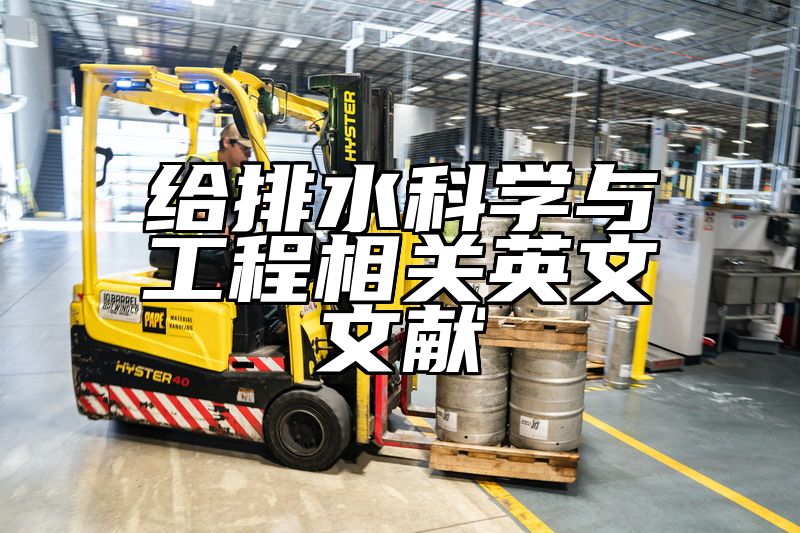

给排水科学与工程相关英文文献
1. What are the current trends in water conservation technology for buildings?
目前建筑节水技术的趋势是什么?
Water conservation technology for buildings has become increasingly important in recent years, as the world faces increasing water shortages and escalating costs of water. Some of the current trends in water conservation technology for buildings include the use of rainwater harvesting systems, low-flow plumbing fixtures, and greywater recycling systems. Rainwater harvesting systems collect rainwater from rooftops and store it for non-potable uses such as irrigation and toilet flushing. Low-flow plumbing fixtures reduce the amount of water used for hand washing, showering, and flushing toilets. Greywater recycling systems treat wastewater from sinks, showers, and washing machines so that it can be reused for flushing toilets or irrigating landscaping. These technologies not only reduce water consumption but can also save building owners money on utility bills.
2. What is the impact of climate change on water management in buildings?
气候变化对建筑物水管理的影响是什么?
The impact of climate change on water management in buildings is significant. As the climate becomes increasingly unpredictable, buildings must adapt to changing weather patterns and shifting water availability. In areas prone to drought, buildings must find new ways to conserve water and ensure that potable water is not wasted. In areas prone to flooding, buildings must have appropriate drainage systems installed to prevent water damage. Additionally, rising sea levels can affect water tables and result in saltwater intrusion, which can contaminate groundwater supplies. Buildings must be designed and constructed to withstand these changes and ensure that they are not contributing to the problem of climate change.
3. What are the benefits of using sustainable stormwater management techniques in buildings?
在建筑中使用可持续的雨水管理技术有哪些好处?
Sustainable stormwater management techniques in buildings, such as green roofs and permeable pavement, offer a range of benefits. Green roofs are designed to absorb rainwater and prevent it from running off into sewers or stormwater drains. This can reduce the strain on these systems and prevent flooding. Additionally, green roofs provide insulation and can help reduce a building's energy consumption. Permeable pavement allows rainwater to pass through its surface and infiltrate into the ground below. This can reduce the amount of runoff that enters stormwater drains and can help recharge groundwater supplies. Using sustainable stormwater management techniques can also help buildings earn LEED certification, which can improve their marketability and increase their value.

4. How does the design of a building impact its water usage?
建筑物的设计如何影响其用水量?
The design of a building can have a significant impact on its water usage. Buildings that are designed with water conservation in mind, such as those with low-flow plumbing fixtures and rainwater harvesting systems, will use less water than buildings that do not incorporate these features. Additionally, buildings that are designed to optimize natural lighting can reduce a building's energy consumption, which in turn can reduce the demand for water used for energy production. Buildings that are designed to maximize outdoor shading can also reduce a building's cooling needs in summer months, which can reduce the amount of water used for air conditioning.
5. How can technology be used to improve water management in buildings?
如何利用技术来改善建筑物中的水管理?
Technology can be an invaluable tool in improving water management in buildings. Smart water meters can be used to monitor water usage in real-time, allowing building managers to identify leaks and other issues quickly. Water monitoring sensors can also be installed to track water usage and detect leaks or other anomalies. Automated irrigation systems can help ensure that landscaping is not over-watered, saving water and reducing the amount of maintenance required. Additionally, water-use data can be collected and analyzed to identify trends and opportunities for further water savings. Advancements in technology have the potential to transform water management in buildings, making it easier for building managers to conserve water and reduce their environmental impact.






